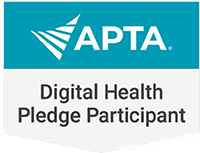Contributed by Ben Galin, DPT, VP of Strategy
More than twenty-five years ago, as a student looking to get into the world of physical therapy (PT), I was “all in” on my first student shadowing experience with my first patient on my first day. Watching the comradery between the PT and the patient and the PT and the other PTs was just awesome. I loved seeing partners working together toward an outcome, high fives and jokes included. It was medicine with much more personal touch than I was used to seeing (my experience with medicine as a nineteen-year-old was very limited).
I began practicing in 2001. It was at a hospital system with inpatient, outpatient, skilled nursing facility (SNF), long-term care (LTC), wound care, and aquatics. It was a great experience, and I moved on to outpatient orthopedics, home health, and some other ventures along the way. The more I learned about how to treat patients, I was also learning about compliance, regulations, billing, and the healthcare system at large. I understood how commercial and federal payers worked in the hospital, SNF, LTC, home health, and outpatient environments. I took administrative roles and leveraged my understanding to consultative roles, which has brought me to where I am today — working on deploying new MSK delivery models beyond the traditional brick and mortar experiences.
Because reimbursements have declined more than 50% since 2001, and provider care delivery costs, patient costs, and system costs have increased even more so, there is an obvious breaking point where the world I once knew will indeed collapse on itself. Not much different than seeing hospital-at-home programs failing to involve home care agencies. As the model to deliver in-home care is too expensive for the outcomes in many hospital-based models (meaning other solutions to rehab a patient will move around us and before we know it if we are not at a seat at the table when designing the solution).
So where does this world sit today? 
Somewhere between straddling two canoes. It is a balancing act. One foot is rooted deeply in the Fee for Service (FFS) models that are collapsing under their own weight. That canoe has multiple holes in it and held together with duct tape and despair. Then there is a shiny new canoe. The Value Based Care canoe. It is a little unnerving to put all our weight in this canoe. It does not have the wear patterns of paddle-worn in grooves from the past 20+ years. It does not have battle scars. It does not fit on the roof of my car, and it does not store where my old canoe was kept. It is uncomfortable as it sits differently. But I know that the VBC canoe is built well, has a map of the river ahead, and knows the river I have passed through. It has a different purpose, and it is going to require a different paddle, but it makes sense to start putting at least 60% of my weight into that canoe.
The FFS canoe coupled with the delivery methods of today, are not going to survive with the cost of care delivery rapidly expanding, and the FFS reimbursement rapidly decreasing. The path forward will require working WITH other organizations, WITH the payers, and WITH competitors. The new path will need to focus on delivering great outcomes at the most efficient and effective price. It will undoubtedly need digital solutions, care navigation, and integration. And it will undoubtedly be uncomfortable to begin with, but will become the norm, and unburden our ecosystem from the four-unit-visit and the three-time-per-week mandate. It will be liberating once you can stop straddling and place both feet in the new canoe.
My colleagues and partners at Genie Health and I see this horizon, and it is approaching quickly. Not as quickly as some of our colleagues in internal medicine have seen, but it is tangibly close. It is time to stop duct taping the old canoe and figuring out ways to make it river worthy. It is time to get into the new canoe with your new paddles and enjoy the river again. High fives will return, not only between PTs and PTs and PTs to patients, but between PTs and other MSK colleagues, and PTs and payers. It will be an awesome evolution for our profession.
Genie Health is “all in” on this new journey, we are looking for those in the MSK ecosystem who are ready to come along in this new canoe or at least in the same river at the same time. Who’s coming aboard? Email Ben with your thoughts.


